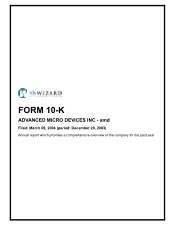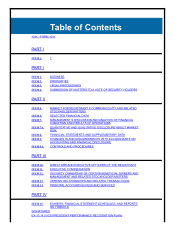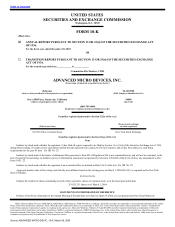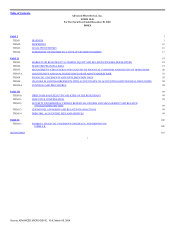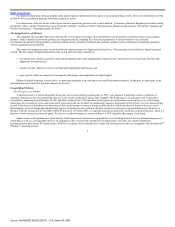AMD 2003 Annual Report Download - page 11
Download and view the complete annual report
Please find page 11 of the 2003 AMD annual report below. You can navigate through the pages in the report by either clicking on the pages listed below, or by using the keyword search tool below to find specific information within the annual report.
Table of Contents
Memory Products
Flash Memory Market
Memory circuits store data and instructions and are characterized as either volatile or non-volatile. Volatile devices lose stored information after electrical
power is shut off while non-volatile devices retain stored information. Volatile memory integrated circuits primarily consist of Dynamic Random Access
Memory, or DRAM, devices and Static Random Access Memory, or SRAM, devices. Non-volatile memory integrated circuits include Flash memory, Read-Only
Memory, or ROM, Erasable Programmable Read-Only Memory, or EPROM, and Electrically Erasable Programmable Read-Only Memory, or EEPROM,
devices.
Flash memory devices have a size and cost advantage over EEPROM devices, which utilize a larger, more expensive memory cell. Flash memory devices
also provide greater flexibility and ease of use when compared to other non-volatile memory devices, such as ROM and EPROM, because Flash memory devices
can be electrically rewritten to update parameters or system software. ROM devices cannot be rewritten and EPROM devices require information to be erased
using ultraviolet light before they can be rewritten. The Flash memory market has grown significantly in recent years. In particular, the increasing use and
functionality of consumer electronics such as cellular phones, MP3 players, DVD players, digital cameras, and personal storage USB drives has contributed to an
increasing demand for Flash memory devices.
There are two major types of Flash memory employed in the non-volatile memory market today: Boolean logic-based NOR (Not Or) Flash memory and
NAND (Not And) Flash memory. NOR Flash memory is generally more reliable than NAND and less prone to data corruption. NOR Flash memory is typically
used to store program code in communication devices such as cellular telephones, and consumer products such as DVD players. NAND Flash memory has
generally been less expensive to manufacture and is typically used in devices that require high-capacity data storage such as memory cards for digital cameras
and MP3 players. Within the Flash memory market, we sell primarily NOR Spansion Flash memory-based products. In 2003, we also sold a very limited number
of our EPROM devices. Sales of EPROM devices have been steadily declining for the past few years as customers switch over to Flash memory devices. In
2004, we will continue to sell our existing inventory of EPROM products. However, we expect these sales to be minimal and we do not intend to manufacture
any new EPROM products in 2004.
Flash Memory Products
Our Spansion Flash memory products encompass a broad spectrum of densities and features to address the wireless mobile handset and embedded systems
markets. These products are used in cellular telephones, consumer electronics, automotive electronics, networking equipment and other applications that require
memory to be non-volatile and electrically rewritten. Our Spansion Flash memory products may be categorized into two main technologies: floating gate
technology and MirrorBit technology.
Spansion Flash memory products using conventional floating gate technology are available in densities from one megabit to 128 megabits. A conventional
memory cell includes a transistor having a source and a drain and a control gate to regulate the current flow between the source and the drain, thereby defining
whether the memory cell stores a “0” bit or a “1” bit. Floating gate technology is memory cell technology in which the memory cell includes a “floating gate”
between the control gate and the source and drain. Adding or removing charge from the floating gate changes the threshold voltage of the cell. Products using
conventional floating gate technology are typically used for their non-volatile code storage and code execution as well as their ease of in-system
re-programmability. These products are designed to meet the requirements of a range of Flash memory market segments, from the low-end, low-density value
segment to the high-performance, high-density wireless segment.
Spansion Flash memory products also include devices based on MirrorBit technology, a proprietary technology that stores two bits of data in a single
memory cell thereby doubling the density, or storage capacity, of each memory cell. Products based on MirrorBit technology require fewer wafer fabrication
process steps to
6
Source: ADVANCED MICRO DEVIC, 10-K, March 09, 2004

